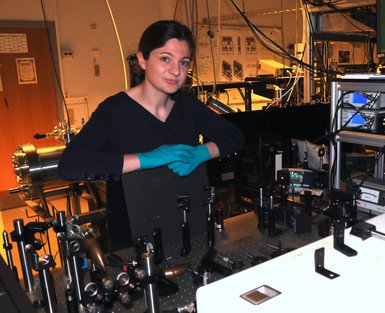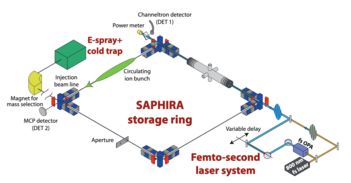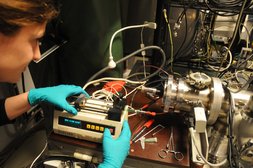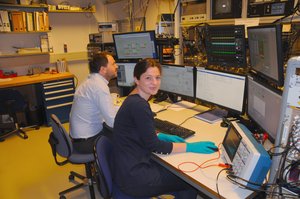What do you do at IFA when the institute is closed?
Postdoc Elisabeth Gruber is one of the researchers that were granted special access to IFA during the corona-closedown.
During the close-down access was restricted to employees with a specific need to be physically present at the institute. Some research equipment could not be closed down or could not be left unattended without harm or elaborate adjustments afterwards. Projects that for various reasons could not be delayed have been high priority both during the strict closedown and in the period where up to 20 persons were allowed in the building complex at the same time.
One of these persons is postdoc Elisabeth Gruber. Her employment at the institute will soon run out, making it rather urgent to finish a series of measurements at the storage ring SAPHIRA. Photo: OJK/IFA
Elisabeth Gruber is measuring on the properties of chlorophyll molecules which are the key pigments for photosynthesis in plants. Knowing these properties are important amongst other things in the work towards artificial photosynthesis.
From a vial with a solvent of chlorophyll, the molecular ions are brought into the gas phase by electrospray ionization, accumulated in an ion trap, accelerated and separated via a mass/charge separating magnet before being sent into SAPHIRA; a (square) storage ring. A femtosecond laser pulse "pumps" the molecules into a higher energy state and the decay from this state is “probed” by a second laser pulse of variable delay. Dynamics of chlorophyll are thus being studied as they happen in real time.
To run and optimize the experiment, Elisabeth Gruber is working together with postdoc Ricky Teiwes. Photo: OJK/IFA.




